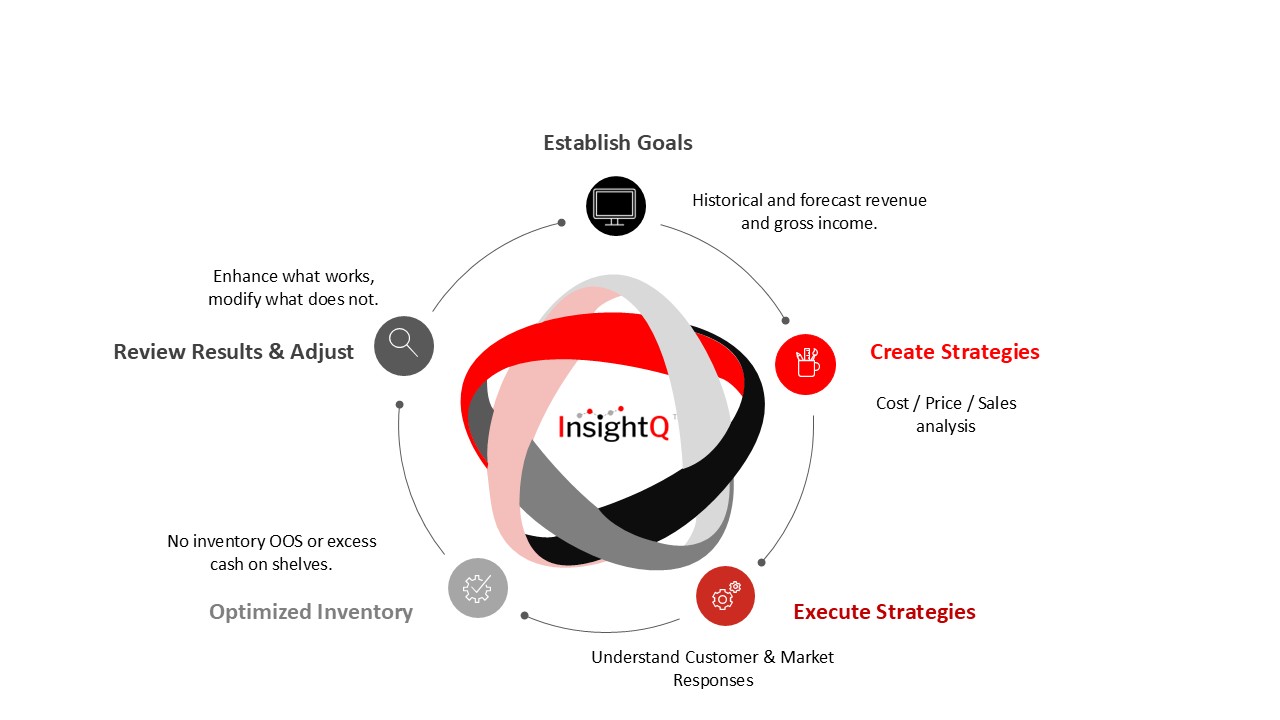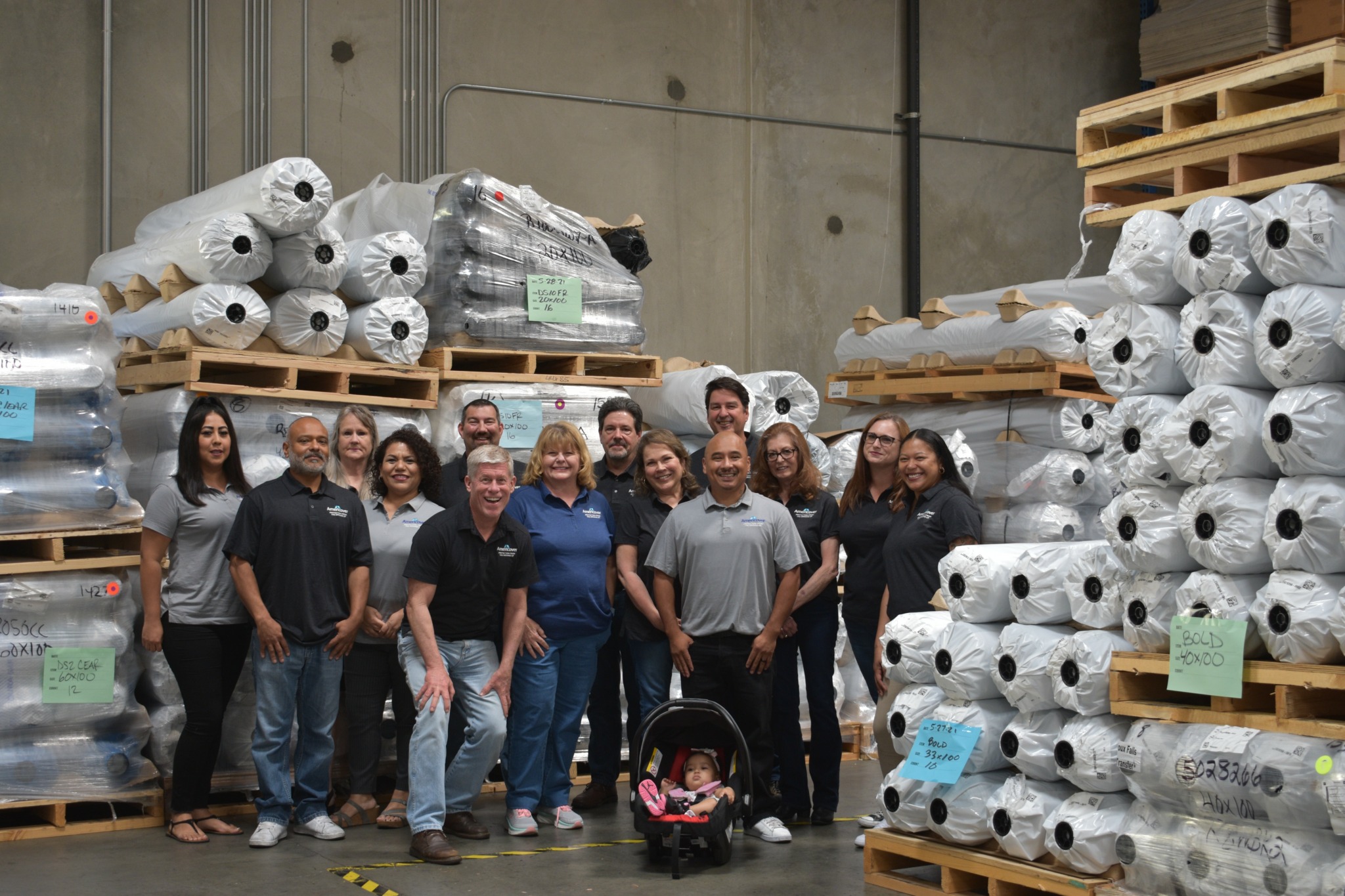We caught up with the brilliant and insightful Peter OSullivan a few weeks ago and have shared our conversation below.
Peter, thanks for joining us, excited to have you contributing your stories and insights. It’s easy to look at a business or industry as an outsider and assume it’s super profitable – but we’ve seen over and over again in our conversation with folks that most industries have factors that make profitability a challenge. What’s biggest challenge to profitability in your industry?
Companies have more software and data than ever. But these systems are frequently overwhelming managers and not supporting the expert decision-making they were hired to make.
Additionally, AI is becoming more and more important to all organizations in every market. But many companies are struggling to understand how to use and implement to drive efficiencies and profitability.
We created a solution to both problems.
We invented “InsightQ”. It is an AI-driven Business Intelligence as a Service solution designed for retail, manufacturers, distributors, and eCommerce businesses. We implement quickly, affordably and provide AI driven predictive information to decision makers across the enterprise.

Awesome – so before we get into the rest of our questions, can you briefly introduce yourself to our readers.
Peter’s vision is to empower smaller companies to use analytics in an affordable and accessible way.
Peter has over 20 years as an executive and turn-around consultant to technology, manufacturing and eCommerce distributors.
During his career as a Consultant, he took many interim roles as CEO and COO, primarily with companies in tremendous distress. Through both Leadership and use of Data, he produced dramatic, permanent results in a very short period of time. As a result, he decided to take the analytics that he used to increase profitability with his clients, and create a series of profit-driven reports to clients could use the same methods to increase performance – without the cost of hiring an expensive consultant.
The goal was to make it affordable, fast and easy to install and completely customizable to the unique needs of each users.
He earned his BA in Economics at UCLA and an MBA from Santa Clara University. He also has certificates in Six Sigma and Lean Six Sigma from Pepperdine University.
Peter has a patent in data synchronization.
He is an instrument-rated and aerobatic private pilot

Can you open up about a time when you had a really close call with the business?
As a management consultant I would be called into organizations for a variety of different issues that was presented by the executive team in every event we always are aware that what the problem was that we were presented was often not accurate for two reasons one the management team themselves are not really aware of the core issue that is constraining their organization’s performance or often it is a lack of willingness to confront the issues themselves that actually created the event in other words they don’t want to admit that they’ve made mistakes and they don’t know how to get out of the blind so they create an alternate story to give to the consultant the irony here is this executive team is asking for expert advice and help to change the outcome and yet they are still pulling the advisor that they’re asking to come in because they’re so unwilling to confront the core issues this is very common human behavior it’s not exclusive to executives in any way but it is also very frequently the case as a professional management consultant you already are aware that what you will discover may be very different from what is presented so the first step is to do a deep analysis in 2 dimensions one is to look at the data itself and 2nd is to interview the executive staff and also other managers within the organization to see how the stories align with the data itself and from there you typically can find root.
Several years ago I was presented a company that was struggling to integrate to organizations after a recent acquisition so the presenting problem was a lack of process and cultural integration after we did our analysis I was there with another management consultant expert who was better suited at directing culture while I was more focused on finance and is this process we discovered that the company was 2 payrolls away from bankruptcy the challenge for us was therefore to present our findings to the executive staff and provide a prescription and the path forward that we felt number one would serve the company and #2 would be accepted by the management team that had started the engagement with a false premise a fairly tall order
we developed the plan and decided to move quickly both because the conditions required it and we didn’t want to delay the information transfer to the executive team because we didn’t want them to be indecisive we needed them to make a decision quickly so we knew whether we were to get to work or to let them go on their own way and let the chips fall where they might the initial which action was very emotional including and in particular from the CEO who felt a tremendous burden for the failure and went back and forth between owning all of the issues and projecting all of the issues within 15 minute time frames fortunately once the initial emotional reaction settles down and we’ve got the executive team to focus on next steps we were able to get buy in and some good advice from all of the executive staff including the CEO in terms of a path forward which included leaving the CEO in his role so that we didn’t scare the market itself and rather added me as a chief operating officer although I was primarily directing the organization in both execution and vision but we left the CEO in place to manage customers and not spook expectations within two weeks we released nearly 1/3 of the staff because the company was primarily driven through professional services and labor was the greatest cost that exercise was very difficult emotionally but of course as the person leading that challenge the key was to do it fairly to do it effectively which meant even some of the best performing employees had to be let go because we had a matrix to build to make sure we had the right skills and the right team in place rather than all of the very most talented individuals that’s one of the most painful parts is many of the employees had no personal role in the demise of the company’s financial situation yet many of them paid the price by having to move on one thing that gets lost when you do downsizing is how expensive it is because we needed to make sure we took good care of the employees on the way out financially which is expensive what’s more expensive is to have the existing team see the management and leadership treat existing employees poorly both disrespectfully or with a poor exit package because that leaves the remaining team demoralized beyond what is needed and the performance of the remaining team is reduced and the loyalty is almost evaporated so unless you take good care of those people reading what is remaining is a team that is not engaged not loyal and not willing to see it through the most difficult transition in the company’s history not a good formula for success so we spent a full day letting people go respectfully and with good insurance packages sometimes as long as six months we made sure they had health insurance that we would pay for and other accommodations along the way careful not to set a precedent that would be needed to follow for the life of the company the end result was a successful turn around a very engaged company and years later I have been updated by the CEO who has become a friend of mine they are now more profitable than they’ve ever been.

Can you talk to us about how your side-hustle turned into something more.
Yes. Hidden analytics started when I was in an organization and having used business intelligence applications in prior larger more complex organizations I discovered the value of having this ability to have instantaneous analysis at my desktop and needed it as a management consultant in subsequent engagements. Now the process was not linear in other words I knew what the solution was that I wanted and needed but it wasn’t clear to me #1 how to get there #2 how difficult it was going to be to get there So what started off as kind of a vision for creating a really unique consulting offering became a years long effort at creating and refining a product that eventually led me to be able to provide this as a standalone product to my customers. The path really is about having the vision putting the pieces together and discovering the tactics are not always as clear in the beginning as you might expect so the ability to make adjustments and to be creative along the way and honestly to be very open to mistakes and willing to use those mistakes as lessons learned rather than setbacks is critical to creating what is now become InsightQ.
So the project started on my own in the evenings I would build and use my totally sophistic skills to create models that I could provide to a developer and build into a business intelligence system now at some point I had to pick a technology or application to use and I chose at the time to partner with another technology provider who had an existing business intelligence application we built that over time again in my off hours when I wasn’t directly consulting to a given organization and then would be able to use the application that we were building inside with my clients as an additional value add to my engagement. That naturally led to and unnumbered her refinements along the way where you could really kind of get more precise about exactly how the vision is to be used in a practical everyday way.
In the middle of all this my relationship with my technology partner dissolved as a result of a clear need to have more adaptations than was originally anticipated at least by my technology partner who was only interested in kind of one time creating an application that was self-serving and did not need modifications. Now I was aware that it was going to need constant modifications but somewhere in our initial negotiations for partnership he seemed to be the owner of my technology partner seemed to be unaware of this additional and and was not interested in pursuing that despite the fact that it came with payable professional services he just really wanted to build an app and have other folks use it which was fair but not the original agreement.
So I was forced to restart the entire process a painful and expensive experience but one that allowed me to do 2 things one understand at a detailed level the technology and the processes needed to build this insight Q system that I have now in production and two really bring more of my own personal vision to the way that we designed the application and what I mean by that is it is critically important for the clients that we serve that we are providing a very adaptable and cost effective software tool to meet their needs and be able to make modifications quickly that’s the core value proposition is that this is super cost effective and super simple for users to be able to use in their organizations if it doesn’t meet those criteria then it doesn’t hold the value that I’m working to create for my customers. It’s kind of like just saying if you can’t build it this way then then there is no product so these were constraints that were non negotiable we had to build it in such a way that it was very easy to modify and very cost effective cost effective to modify because every business that we serve will want their own unique analytics to serve their own unique needs if we are to be part of their core strategy going forward and any organization that claims to provide robust data analytics and analysis has to be part of the core strategy so there’s your primary constraint.
My detailed engagement in the process resulted in building an architecture that I say is similar to building Lego blocks in other words the way that the code and the entire database architecture is drawn up it is easy to take certain governments and move them around one example demand planning our demand planning is designed as its own semi standalone application so if a client has one supplier and one warehouse it is no different than if the customer has 100 suppliers and 100 warehouses we just stack them all together and aggregate the results so while it won’t cost exactly the same our ability to adapt to that is incredibly simple for our team it doesn’t require any significant recording or complicated development that’s the sort of value that has to be delivered and the only way to deliver that value is to really understand how to set up the whole system underneath the hood.
So I used this tool insight Q prior to even branding it as an additional element that I brought to my clients who helped me refine it test it in the field really understand what was more important than other things you know some things I thought were important ended up not being as important as some things that I didn’t think about ended up being incredibly critical like the ability to have a recalculated safety stock level. During some subsequent analysis we discovered how much excess inventory we were carrying or how much inventory we were short not because we didn’t forecast demand correctly but because we didn’t carry the right and adjust to the right need to start quantity and that was something that I missed early on and was able to correct and refine so that’s embedded into what we deliver in inside Q so at some point the demand for the application itself rather than my consulting services started to overwhelm the hours of my day and so my side hustle became my primary hustle and that only accelerated both the development of the application and refinement but also allowed me to start branding around the the value of the application as opposed to my personal consulting skills.
Contact Info:
- Website: https://www.highbeamanalytics.com
- Linkedin: https://www.linkedin.com/company/highbeamanalytics
- Youtube: https://www.youtube.com/playlist?list=PLmU0He4TfBSvr5muf1NRnO0WoEH3Uq2Eh



